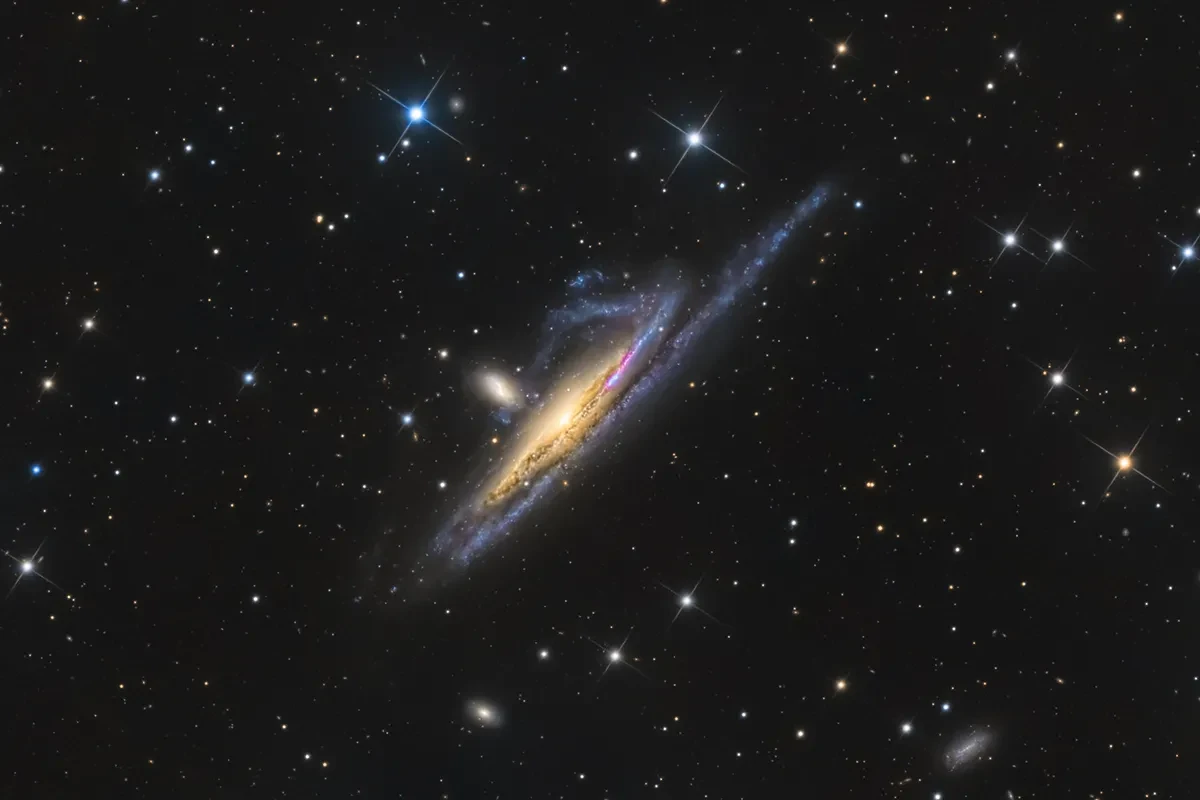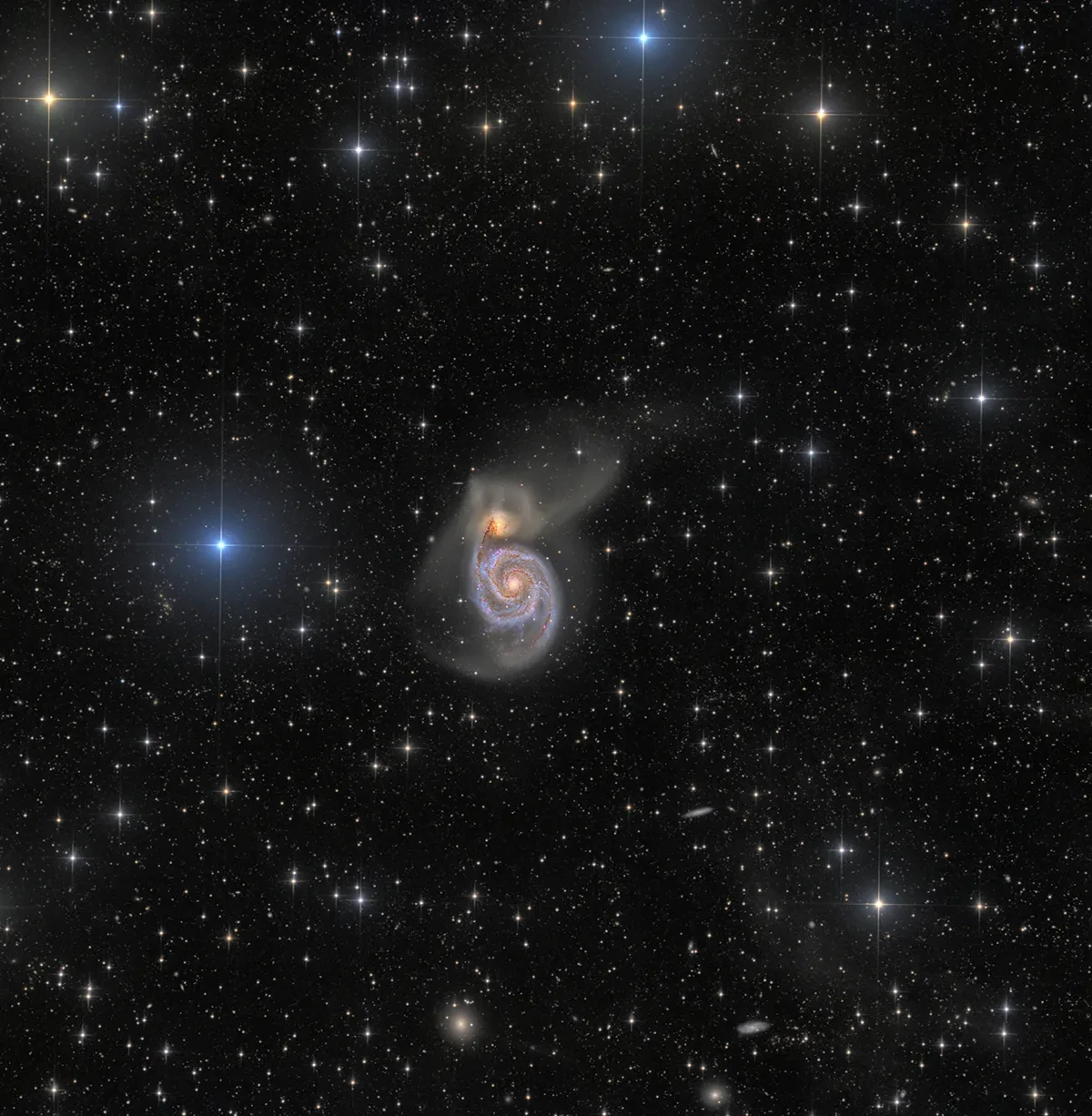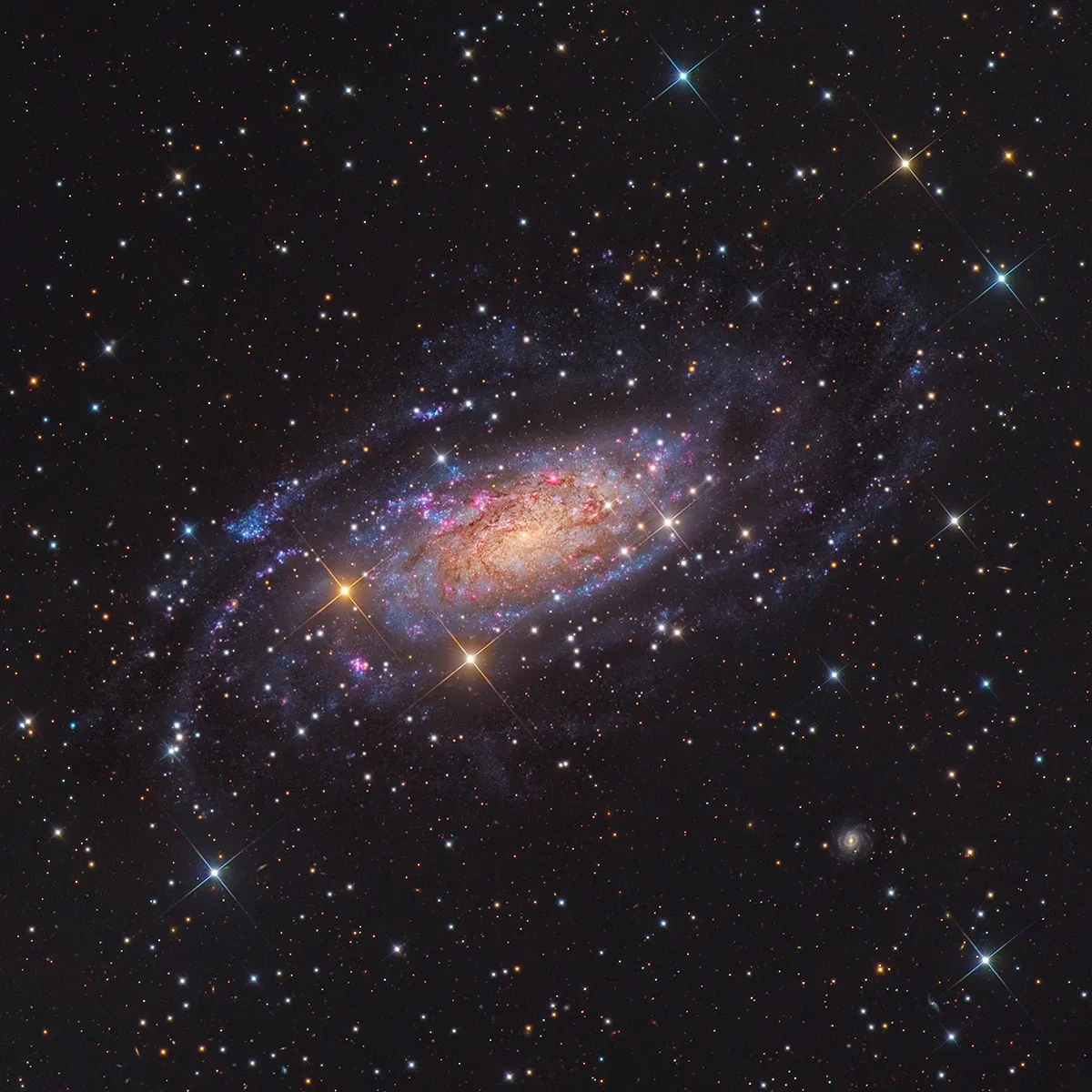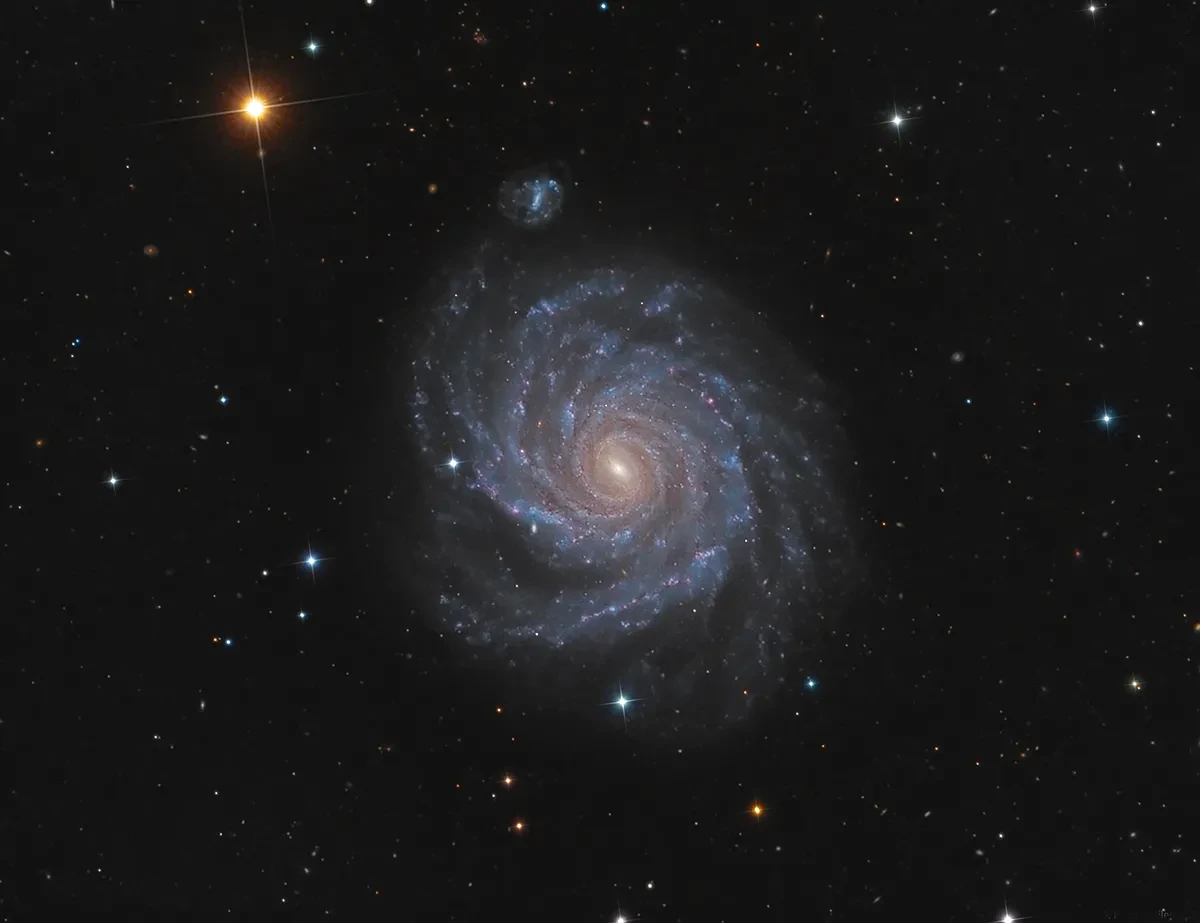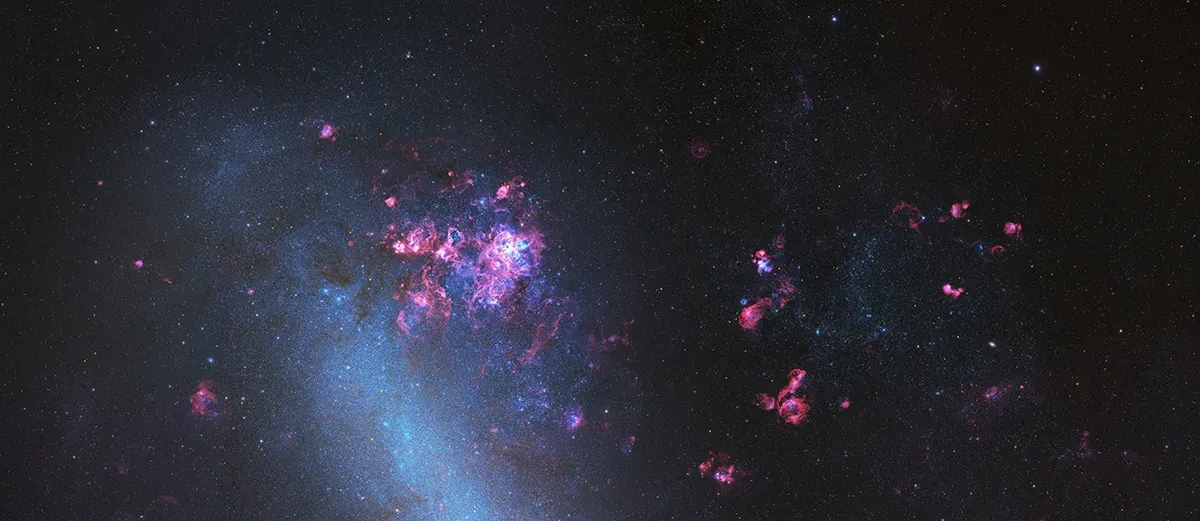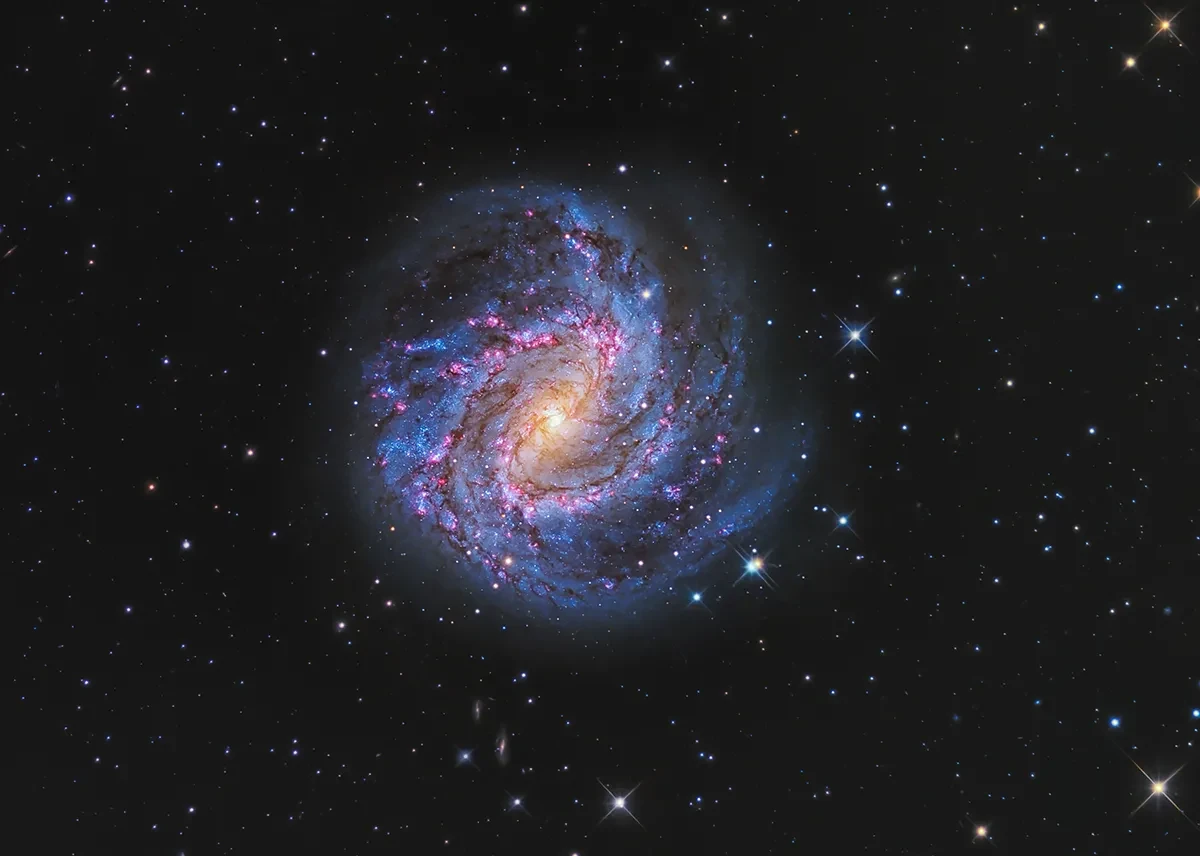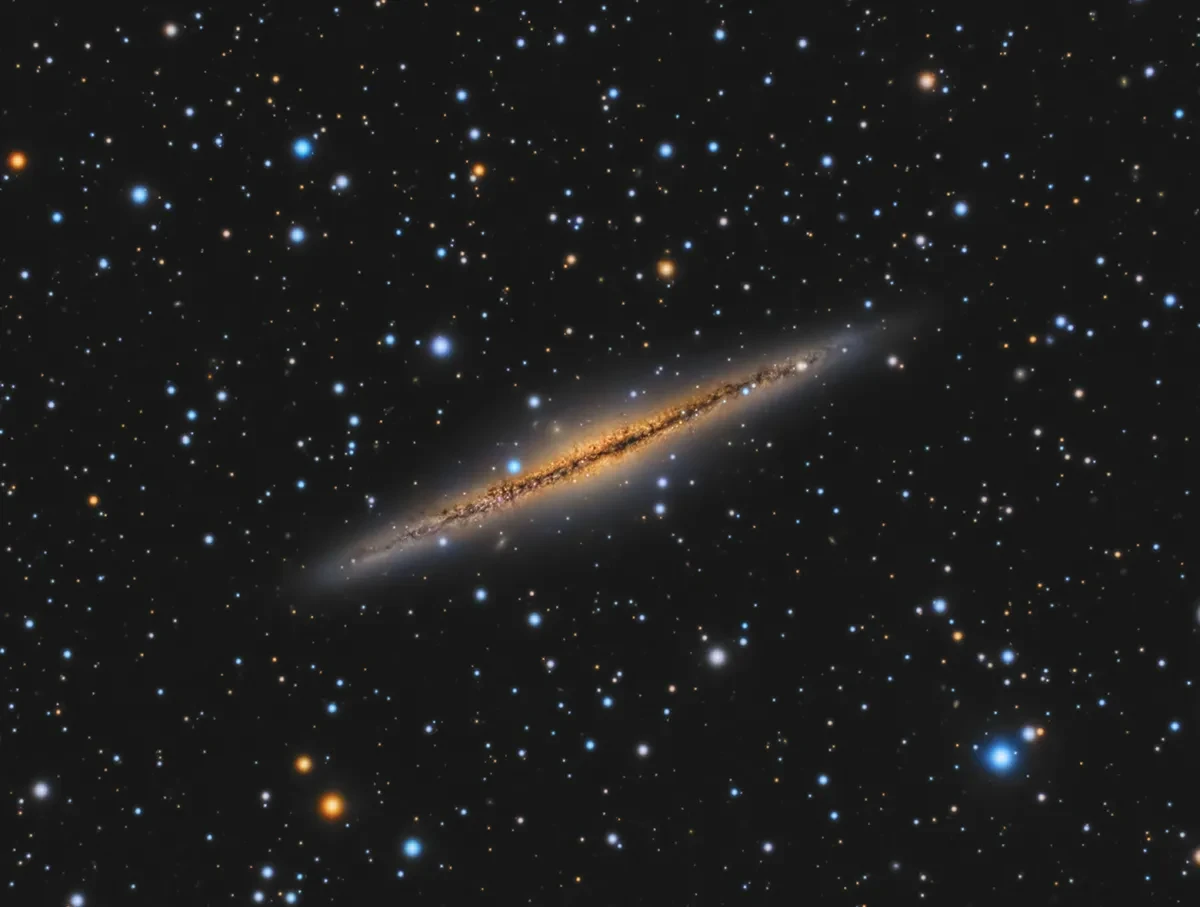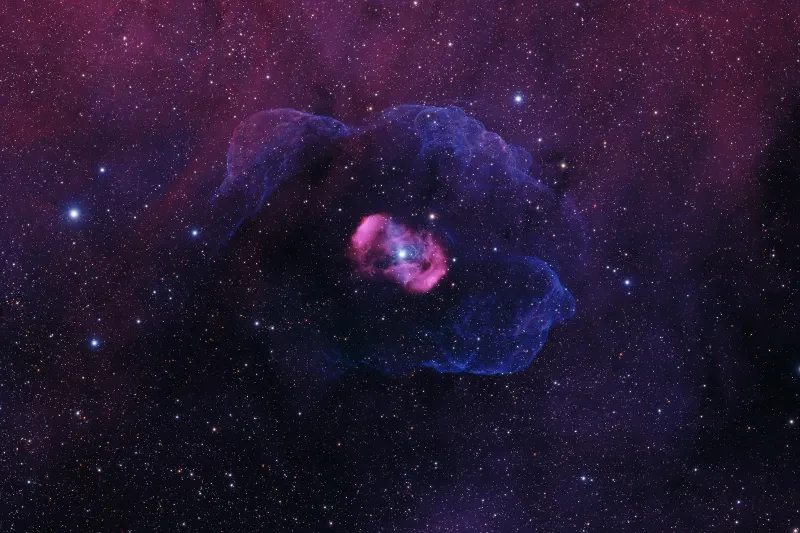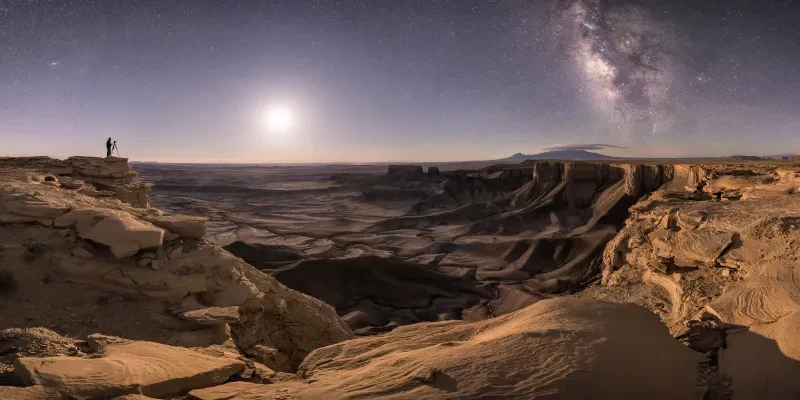Galaxies typically consist of many millions, billions or trillions of stars. When we look up into the night sky, a scant few galaxies are visible to the naked eye.
Most of the galaxies in this year’s competition lie at distances of anywhere between 21 and 60 million light years from our planet – far too distant to be seen with the unaided eye. The light that allows us to view them in photographic form set out millions of years before anything resembling a human being existed – a sobering thought!
To obtain an image of such a distant target requires planning, powerful instruments, long exposure times and careful processing, arguably presenting some of the toughest technical challenges in astrophotography.
The Galaxies category this year includes some truly amazing images. See who has been shortlisted and who has secured the top prizes below.

The winning image
Majestic Sombrero Galaxy by Utkarsh Mishra, Michael Petrasko and Muir Evenden
Image taken in Pie Town, New Mexico, USA
"This image shows the faint star streams that were created when a smaller galaxy collided with, and its remnants then began to orbit, the Milky Way," explain the photographers.
Speaking of the image's composition, "We made three versions of the photograph: a muted version for the background, a regular version for the disc and a super-stretched starless version for the stellar streams and halo. They were then combined into a single image."
Equipment used: ATEO 16" f/3.7 Dreamscope Astrograph Newtonian telescope, Paramount ME II mount, Baader LRGB filter, FLI Proline 16803 CCD camera, 1558 mm f/3.7, 56 x 300-second Lum. exposures (10 hours total exposure), 1x1 binning
The Sombrero is a well documented galaxy, yet astrophotographers still find ways to tease more majesty from it. To see the misty remnants of previous collisions surrounding the galaxy, itself floating alone in the void, is just exquisite.
Steve Marsh, competition judge
Runner-up
Arp 271 Cosmic Collision by Mark Hanson and Mike Selby

Image taken at El Sauce Observatory, Río Hurtado, Chile
Mark and Mike explain, "Arp 271 is a pair of stunning galaxies, NGC 5246 and NGC 5247, about 130,000 light years across and classified in Halton Arp’s Atlas of Peculiar Galaxies. The two spiral galaxies, similar in size and located about 90 million light years from Earth, are engaged in major interaction that may eventually end in a collision and merger.
"The interaction of NGC 5246 and NGC 5427 is expected to continue for tens of millions of years and the mutual gravitational attraction between the galaxies, shown by the bridge of stars that already links the two, will result in the birth of further new stars."
Equipment used: CDK 1000 telescope and RiDK 700 FL 4900 telescope (RGB values), CDK 1000 mount, FLI 16803 camera, 6000 mm f/6, 32 hours total exposure
The scale of this picture boggles the mind! The vast size of each of these spiral galaxies is almost beyond comprehension, yet here they are presented in a single stunning photograph, appearing almost to be playing with each other. This interaction is expected to continue for tens of millions of years.
Imad Ahmed, competition judge
Highly commended
SMC and the Magellanic Bridge by Mathew Ludgate
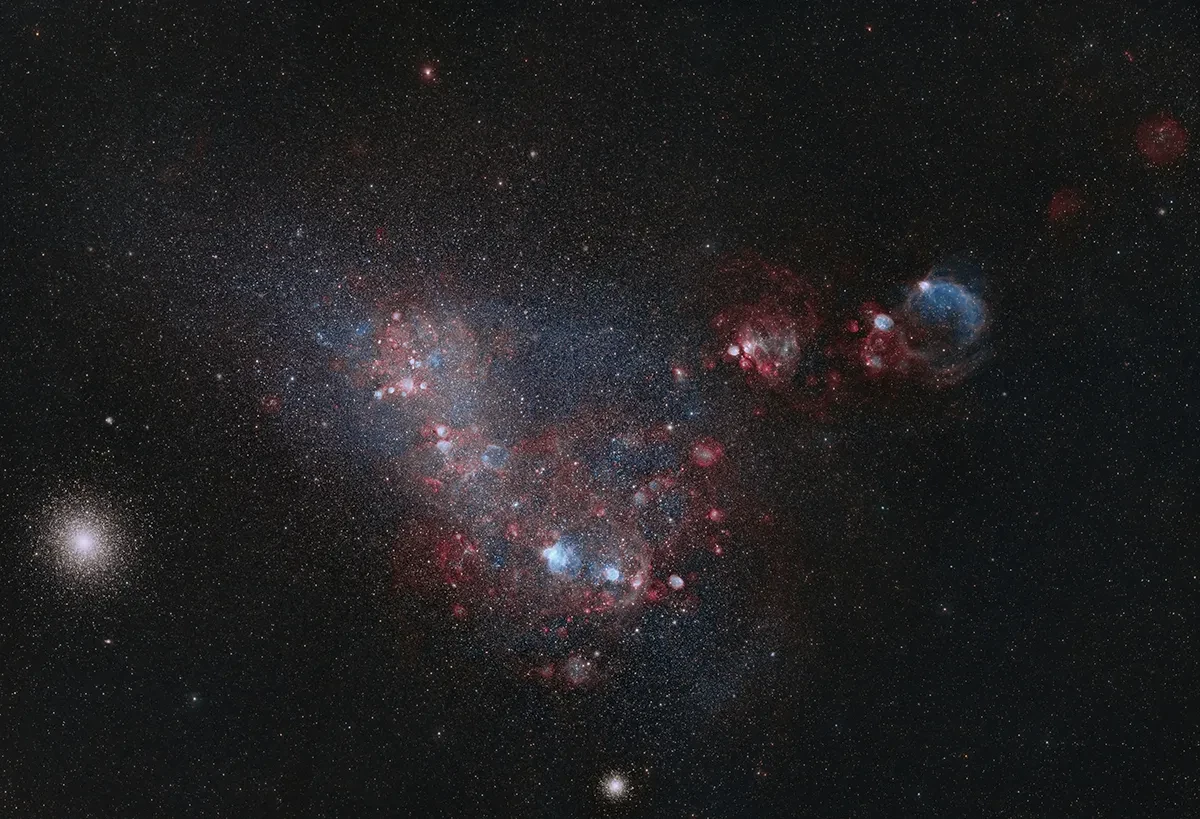
Image taken in Dunedin, South Island, New Zealand
Mathew says, "The Small Magellanic Cloud (SMC) is an irregular dwarf galaxy that has been disrupted and shaped by interactions with its neighbours, the Large Magellanic Cloud (LMC) and the Milky Way Galaxy. These interactions result in intense gravitational tidal shocks, which have stripped and redistributed material from the SMC, forming a halo and numerous extended structures of ionized gas. One such structure is the Magellanic Bridge, an elongated stream of gas that connects the SMC to the LMC.
"This wide-field image of the SMC was captured using narrowband filters to highlight the nebulosity in the area. It reveals the complex emissions within the galaxy as well as the striking origin of the Magellanic Bridge as it begins its extension towards the LMC."
Equipment used: Nikon 400mm f/2.8-lens telescope, Rainbow Astro RST-135 mount, Chroma Filters, ZWO ASI6200MM Pro camera, multiple 5-minute exposures totalling 51.25 hours
The Small Magellanic Cloud is often overlooked in favour of its big brother, but it is an amazing example of a dwarf galaxy on our doorstep. Nowhere has its detail been better realized by a ground-based astrophotographer.
Steve Marsh, competition judge
See the full shortlist
Explore all the photographs in the Galaxies category
Our partners


